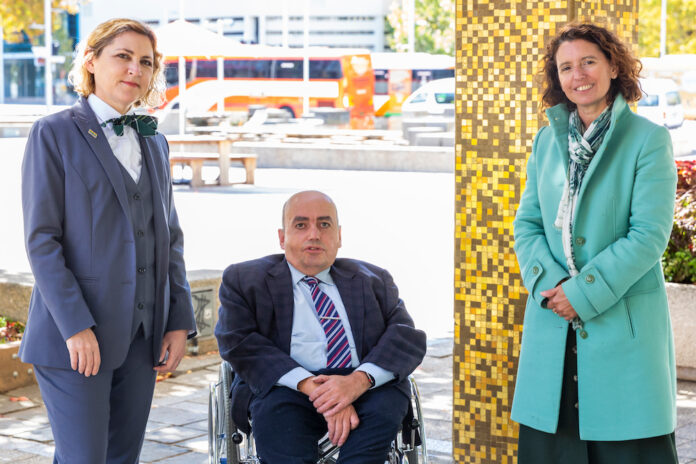
A proposed new national requirement for mandatory accessibility standards in the National Construction Code will allow Australians living with physical disabilities to have more freedom in their own homes.
ACT Minister for Sustainable Building and Construction, Rebecca Vassarotti, has announced she will call for mandatory accessibility standards in the National Construction Code (NCC) at the upcoming meeting of the ministers responsible from all States, Territories and nationally.
It is estimated that only 5% to 10% of new homes in Australia are being built to accessibility standards, forcing people living with mobility issues to live confined lives.
The change to the NCC would mean all future homes, townhouses and apartments would meet a threshold level of universal design, including doors wide enough to accommodate wheelchairs, bathrooms on the ground floor, and structural reinforcements to allow for the installation of things like grip rails if they are needed in future.
According to Ms Vassarotti, Australia is behind many other jurisdictions in the world when it comes to accessibility.
“This is an issue for everyone,” she said.
“We need to move towards a position where all of our homes are accessible and welcoming to our friends, our families and ourselves if we have mobility issues.”
The ACT Council of Social Service (ACTCOSS) has joined with Rights & Inclusion Australia to welcome the inclusion of the mandatory accessibility provisions in the NCC.
ACTCOSS head of policy, Craig Wallace, said that implementing these changes would “put an end to vast human misery” for people living with physical disabilities and allow them to continue to retain their independence in a safe environment, rather than sending them to homes.
“We know that people with disabilities and older people, particularly some groups of people like women, are more than sort of twice the amount susceptible to violence in those places than other groups of people,” he said.
“There is certainly an enhanced level of violence and abuse, there’s a lack of choice and control, and we want to do everything that we can to ensure that people can actually remain in their own homes for as long as possible.”
Mr Wallace warned that as Canberra’s population begins to rapidly age, improvements are urgently needed.
“This is a tragedy for the one in five Australians who live with a disability, but it’s also poor planning and foresight, given that Australia’s population is ageing; Canberra’s population is ageing faster than the rest of Australia,” he said.
According to ACT Minister for Disability, Emma Davidson, there are approximately 80,000 Canberrans living with a disability.
She believes having new built environment standards is an important step to create a Canberra that everyone can engage in.
“It really helps us to create a better, more inclusive, welcoming world for everyone by making sure that we’ve got a world that is able to be understood, that is accessible to everyone, regardless of their age, their ability, their body shape and size,” Ms Davidson said.
Ms Vassarotti said the proposed changes will only add 1% to the average construction cost of a new home while saving thousands of dollars in expensive retrofitting to the home in the future.
“If we have a standard for all of Australia, it actually makes it easier for industry to adapt,” she said.
“We will be looking at a new construction code requirement for 2022 … once that code comes in, we will work with Industry to work out what support they need.”
If the national standards are rebutted, Ms Vassarotti has promised to commence work to introduce the standards in the ACT.
“Imagine a world where every home is accessible or more easily adaptable for most people regardless of age, disability, background or other factors. That’s what universal design is about and it’s how we plan to build a better normal in Canberra homes,” Ms Vassarotti said.








